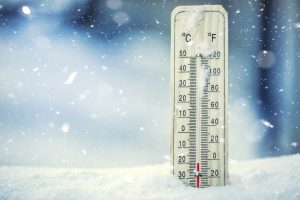 (Gloucester Township, NJ) – Commissioner Carmen Rodriguez, liaison to the Camden County Department of Health and Human Services, advises municipalities that Camden County will be under a Code Blue Advisory Monday evening into Wednesday morning.
(Gloucester Township, NJ) – Commissioner Carmen Rodriguez, liaison to the Camden County Department of Health and Human Services, advises municipalities that Camden County will be under a Code Blue Advisory Monday evening into Wednesday morning.
The Health Officer has issued the Code Blue advisory for Camden County effective from 7 p.m. to 7 a.m., beginning Jan. 31 and ending the morning of Feb. 2. Temperatures during the daytime hours on Monday, Jan. 31 will be at 32 degrees or below. Please note that the new after-hours code blue emergency hotline is 2-1-1.
“Monday through Wednesday will be extremely cold at times with temperatures dipping down into the 20s,” Rodriguez said. “So, it’s imperative that everyone is inside and out of the elements. It’s also crucial that all of our elderly or residents living with disabilities have their heat in working order and all pets are brought indoors.”
When the Camden County Health Officer declares a Code Blue Weather Advisory, municipalities with homeless populations, situational homeless or transient populations are expected to activate their Code Blue response plan to accommodate their immediate needs.
“If you know of anyone who is elderly or disabled, please check on them to make sure they’re prepared for the freezing temperatures,” Rodriguez said. “We cannot let our most vulnerable residents don’t go without heat.”
With a large portion of households in Camden County owning a cat or a dog Rodriguez wants to ensure that all pets are safe during these extreme temperatures as well.
Here are some cold weather tips from Commissioner Rodriguez to keep your pet safe:
- When the thermometer dips below 32 degrees, keep your pet indoors as much as possible. If your pet must stay outside, provide a warm shelter, raised a few inches off the ground, with the opening facing away from the wind and covered with a burlap or plastic flap. The shelter should be large enough for the animal to stand and turn around, but small enough to retain its body heat.
- If your pet is outdoors for extended periods when temperatures are below freezing (32 degrees), be alert for signs of distress from the cold. Just like in people, shivering is a sign that the body temperature is dropping. If you see your pet shivering, it is probably time to bring it inside. Remember, your pet’s body temperature is between 101-102 degrees and its body temperature lowers faster in cold weather.
- A very young, very old pet or a pet with a health problem is more vulnerable to cold.
- An animal with thick fur can tolerate cold longer than a small animal and one with short hair.
- Don’t leave your pet in an unheated vehicle for extended periods of time.
- Make sure your pet has clean unfrozen drinking water. Do not let your pet drink from puddles where there may be deadly antifreeze or other harmful chemicals.
- A pet can pick up rock salt, ice and other melting chemicals in their foot pads. This can harm your pet. Massaging petroleum jelly into paw pads before going outside helps to protect from salt and chemical agents. Moisturizing after a good toweling off helps to heal chapped paws. Wipe your pet’s feet with a damp cloth when it comes inside to protect its pads from damage. If this is a problem for your pet, there are boots available in all sizes. Your dog can get used to wearing the boots indoors for short periods of time. Not all dogs take to them.
- If there are outside cats in the neighborhood, knock on the hood of your vehicle and look under it before starting your engine and driving off. Cats sometimes curl up next to or under warm engines when they are left out in the cold.
- Antifreeze has an attractive scent and taste for animals and is extremely poisonous! Be especially vigilant about the ingestion of antifreeze. The first sign of antifreeze poisoning is a pet that appears drunk. Immediately get your pet to the vet if you suspect it has ingested antifreeze as it can be fatal within four
to eight hours of ingestion. - The Camden County Health Department and the Office of Emergency Management have worked with each municipality to ensure they have the proper resources to respond to these severe weather situations as part of their individual Code Blue plans. Each municipality has identified its own location to accommodate those in their community seeking shelter from the severe weather.
Persons seeking shelter in a warming center should contact their local municipality. Additional resources are available by calling the Camden County Department of Health and Human Services at (800) 999-9045, or by visiting www.camdencounty.com.
In case of a power outage please report it directly to the appropriate utility provider list below:
- PSE&G: 1-800-436-PSEG (7734)
- PSEG website: http://pseg.com/home/customer_service/outage_info/index.jsp
- Atlantic City Electric: 1-800-833-7476
- Atlantic City Electric website: http://www.atlanticcityelectric.com/home/
- South Jersey Gas: 1-800-582-7060
- South Jersey Gas website: http://southjerseygas.com/
